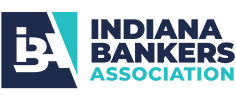
Providing the Insight and Clarity on ATR-QM Rules' Impact on Your Consumer Protection Strategy.
We provide advice to help your team originate loans in ways that comply with the latest ATR/QM rule.
Documenting applicants' ability to pay may seem straightforward. But sometimes, it can be challenging to fit real-life scenarios into a regulatory box.
The TCA team understands these challenges, the complex rules for validating and documenting ATR, and the new requirements for originating QM loans.
As a result, we can show you how to minimize your ATR/QM risk when originating mortgage loans.
We start by getting a complete picture of your operations to understand the QM and non-QM loans you offer and the business strategy behind that product mix.
We review your policies, procedures, and training during our exam and recommend modifications to create a more airtight compliance strategy.
For example, we scrutinize your underwriting practices, ensuring that you're considering all eight key factors, such as a prospective borrower's income and assets, debt-to-income ratio, and credit history, when determining someone's ability to repay a mortgage.
We also check that you're correctly using third-party records to verify borrowers' information and whether you're documenting your process sufficiently.
Through our exploration, your vulnerabilities become apparent, and whether your overall ATR/QM risk strategy is appropriate for your bank's size, location, and goals. Additionally, we also suggest improvements to help you address consumer protection laws.
Our review also entails the following:
- Checking whether you have a consistent way of calculating DTI ratios
- Determining how you preserve and track loan documentation for the required three years.
- Evaluating the effectiveness of your training and how you're keeping loan officers, loan processors, and board management up to date on the newest ATR/QM wrinkles.
- Assessing whether your monitoring schedule is sufficient
Our exam will give you confidence that you're complying with the letter of the law, ensuring that your policies and procedures illustrate that you're taking appropriate steps to determine borrowers' ability to repay a mortgage.
You can count on TCA's A Better Way to help you adhere to ATR/QM rules and reduce your risk.
Key deliverables include:
- Advising you on ways to revamp your policies and procedures to minimize your risk
- Validating that you’ve accurately documented your borrower’s Ability to Repay.
- Ensuring you have followed new Price-Based rules when originating Qualified Mortgages.
- Recommending and developing training and educational resources.
Additional Compliance Topics
Clarifying the Joint Intent Requirements at Application
Joint intent exceptions are a common finding in our compliance reviews. We have found that there are misconceptions on what constitutes joint intent and how it should be documented; most of the questions come from commercial versus consumer mortgage loan officers. Many of the questions we are asked include: Isn’t the joint financial statement enough […]
Fair Lending and Marketing in the Digital Age
There’s an old saying, “You don’t know what you don’t know” and that is certainly true when it comes to marketing initiatives meshing with the world of fair lending. The clash of both worlds and the often-divergent priorities have caused regulators to put this intersection under a microscope. A key fact today is that marketing […]
Financing Manufactured Homes Without Land
The financing of manufactured homes is a niche market. Not all banks offer this type of financing because of the varying underwriting requirements, risk and limited salability of this type of loan. As a bank begins to investigate manufacturing home lending, it is often focused on prudent underwriting and the safety and soundness for this […]
Understanding REMA
A common acronym being discussed more and more in fair lending circles is REMA. The goal of this article is to establish a better understanding of what REMA is and how it can impact your bank. REMA is defined as the Reasonable Expected Market Area, which is the geographical area the regulatory agency believes a […]
2019 Regulation E Claim Calendar
These days, losses from Regulation E error claims are accepted by many institutions as the cost of doing business. Many institutions are relying more heavily upon internal and/or third-party fraud detection and prevention resources. But as you know, managing risk of loss is just part of the story. Regulation E compliance and financial risk continues […]
Cybersecurity: A Quick Overview in 5 Easy Steps
Part 1 of a 6-Part Series Network security, once thought of as an IT issue, is now Cybersecurity. A name change was necessary to keep up with the times, but no matter what it is called, is it still just an IT issue? We don’t think so. A shift in thinking and a different perspective […]











